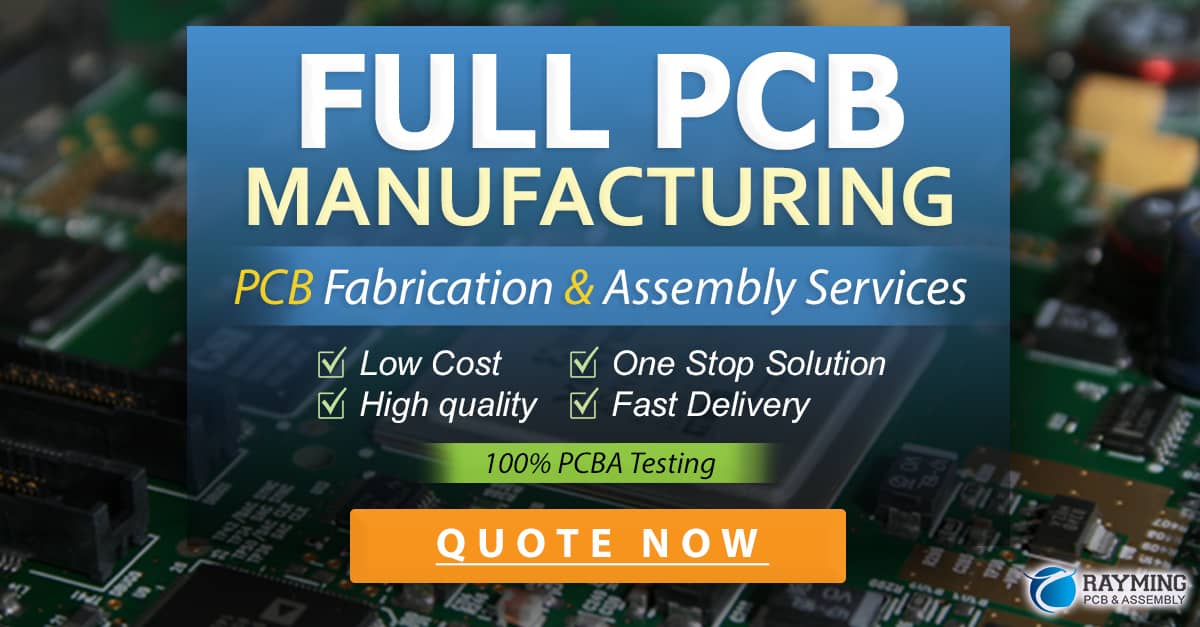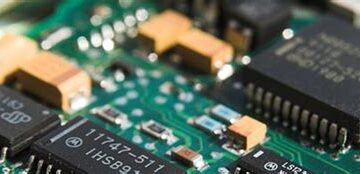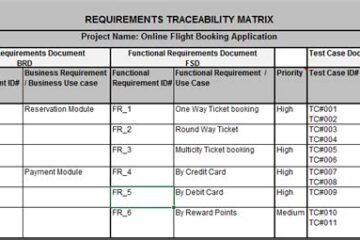What are Flex PCBs?
Flex PCBs are a type of printed circuit board that consists of a thin, flexible substrate made of materials such as polyimide or polyester. Unlike traditional rigid PCBs, Flex PCBs can bend, twist, and conform to various shapes, making them ideal for applications that require flexibility and space efficiency.
Key Features of Flex PCBs
- Flexibility: Flex PCBs can bend and twist without breaking or losing their electrical properties.
- Lightweight: Due to their thin substrate and absence of heavy components, Flex PCBs are lightweight compared to rigid PCBs.
- Space Efficiency: Flex PCBs can be folded or rolled to fit into compact spaces, saving valuable real estate in electronic devices.
- Durability: Flex PCBs are resistant to vibration, shock, and extreme temperatures, making them suitable for harsh environments.
Flex PCB Manufacturing Process
The manufacturing process of Flex PCBs involves several steps that require precision and expertise. Here’s an overview of the key stages:
- Substrate Preparation: The flexible substrate, typically made of polyimide or polyester, is cleaned and prepared for the subsequent steps.
- Copper Lamination: A thin layer of copper is laminated onto the substrate using adhesives and heat.
- Patterning: The desired circuit pattern is transferred onto the copper layer using photolithography or other imaging techniques.
- Etching: The unwanted copper is etched away, leaving only the desired circuit pattern.
- Coverlay Application: A protective coverlay is applied over the circuit pattern to insulate and protect the traces.
- Drilling and Cutting: Holes are drilled for component placement, and the PCB is cut to the desired shape and size.
- Surface Finishing: The exposed copper areas are plated with a protective finish, such as gold or silver, to prevent oxidation and enhance solderability.
- Assembly: Components are soldered onto the Flex PCB, and the final assembly is tested for functionality.
Benefits of Flex PCBs
Flex PCBs offer several advantages over traditional rigid PCBs, making them a preferred choice for many applications:
- Design Flexibility: Flex PCBs allow for creative and compact designs that can fit into confined spaces and conform to irregular shapes.
- Reduced Weight and Size: The thin and lightweight nature of Flex PCBs enables the development of smaller and more portable electronic devices.
- Improved Reliability: Flex PCBs have fewer interconnects and solder joints, reducing the risk of mechanical failures and improving overall reliability.
- Enhanced Signal Integrity: The shorter interconnects and reduced parasitic capacitance in Flex PCBs result in improved signal integrity and reduced noise.
- Cost Savings: Flex PCBs can simplify assembly processes and reduce the number of connectors and wiring, leading to cost savings in manufacturing.

Applications of Flex PCBs
Flex PCBs find applications in various industries and products, including:
- Consumer Electronics: Smartphones, wearables, cameras, and portable devices often utilize Flex PCBs for their compact and lightweight designs.
- Medical Devices: Implantable devices, medical sensors, and diagnostic equipment leverage the flexibility and reliability of Flex PCBs.
- Automotive: Flex PCBs are used in automotive electronics, such as dashboards, infotainment systems, and sensors, due to their ability to withstand vibration and extreme temperatures.
- Aerospace and Defense: The lightweight and robust nature of Flex PCBs makes them suitable for aerospace and defense applications, including avionics, satellites, and military equipment.
- Industrial Equipment: Flex PCBs are employed in industrial automation, robotics, and control systems, where flexibility and durability are crucial.
Top Flex PCB Manufacturers and Fabricators
The Flex PCB industry consists of numerous manufacturers and fabricators worldwide. Here are some of the top players in the market:
| Company | Location | Specialties |
|---|---|---|
| Nippon Mektron | Japan | High-density interconnects, multi-layer Flex PCBs |
| Flexium Interconnect | Taiwan | Rigid-flex PCBs, high-frequency applications |
| Zhen Ding Technology | Taiwan | Flexible copper clad laminates, rigid-flex PCBs |
| Fujikura | Japan | Flexible printed circuits, RFID antennas |
| Career Technology | Taiwan | Single-sided and double-sided Flex PCBs |
| Sumitomo Electric Industries | Japan | Ultra-thin Flex PCBs, high-speed transmission |
| Interflex | South Korea | Multi-layer Flex PCBs, rigid-flex PCBs |
| Multi-Fineline Electronix (MFLEX) | USA | High-density interconnects, wearable electronics |
| Flexcom | USA | Flex and rigid-flex PCBs, medical applications |
| Cicor Group | Switzerland | High-reliability Flex PCBs, aerospace and defense |
These manufacturers and fabricators have established themselves as leaders in the Flex PCB industry, offering high-quality products, advanced manufacturing capabilities, and customized solutions to meet the diverse needs of their customers.
Choosing the Right Flex PCB Manufacturer or Fabricator
When selecting a Flex PCB manufacturer or fabricator, consider the following factors:
- Technical Capabilities: Ensure that the manufacturer has the necessary equipment, expertise, and processes to meet your specific Flex PCB requirements.
- Quality Standards: Look for manufacturers with stringent quality control measures and certifications such as ISO 9001, IATF 16949, or AS9100.
- Experience and Reputation: Choose a manufacturer with a proven track record in the Flex PCB industry and positive customer feedback.
- Prototyping and Manufacturing Capabilities: Consider the manufacturer’s ability to provide rapid prototyping services and scale up to mass production.
- Customer Support: Evaluate the level of customer support offered by the manufacturer, including technical assistance, communication, and responsiveness.
- Cost and Lead Time: Compare the pricing and lead times of different manufacturers to find the best value for your project.
By considering these factors and conducting thorough research, you can select a Flex PCB manufacturer or fabricator that aligns with your specific needs and ensures the success of your project.
Frequently Asked Questions (FAQ)
-
What is the difference between Flex PCBs and rigid PCBs?
Flex PCBs are made of a flexible substrate that allows them to bend and conform to various shapes, while rigid PCBs are made of a solid, inflexible substrate. Flex PCBs offer design flexibility, reduced weight, and improved reliability compared to rigid PCBs. -
What materials are used in Flex PCBs?
The most common materials used in Flex PCBs are polyimide and polyester. These materials provide the necessary flexibility, durability, and electrical insulation properties required for Flex PCB applications. -
Can Flex PCBs be used in high-temperature environments?
Yes, Flex PCBs can be designed to withstand high temperatures. Polyimide-based Flex PCBs, in particular, have excellent thermal stability and can operate in temperatures up to 200°C or higher. -
What is the typical thickness of a Flex PCB?
The thickness of a Flex PCB can vary depending on the application and design requirements. Typically, Flex PCBs range from 0.05 mm to 0.3 mm in thickness, with some ultra-thin designs going down to 0.025 mm. -
How do I choose the right Flex PCB manufacturer for my project?
When choosing a Flex PCB manufacturer, consider factors such as technical capabilities, quality standards, experience and reputation, prototyping and manufacturing capabilities, customer support, cost, and lead time. Conduct thorough research and compare different manufacturers to find the one that best suits your project requirements.
Conclusion
Flex PCBs have revolutionized the electronics industry, enabling the development of compact, lightweight, and flexible devices across various sectors. With their unique properties and versatile applications, Flex PCBs have become an essential component in modern electronics design and manufacturing.
When embarking on a Flex PCB project, it is crucial to partner with a reliable and experienced manufacturer or fabricator. By understanding the manufacturing process, benefits, and applications of Flex PCBs, and considering the key factors in selecting a manufacturer, you can ensure the success of your project and bring your innovative ideas to life.
As technology continues to advance, the demand for Flex PCBs is expected to grow, driving further innovations in materials, manufacturing processes, and design capabilities. By staying informed about the latest trends and developments in the Flex PCB industry, you can leverage the full potential of this versatile technology and stay ahead of the competition.



0 Comments